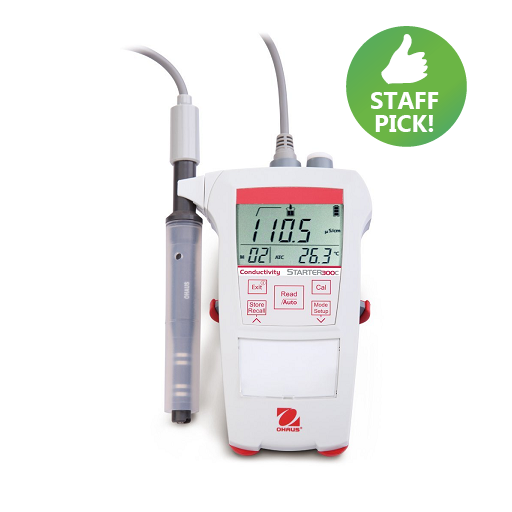The SI measurement unit for electrical conductivity is called Siemens(S). Typically conductivity measurements are displayed in either MilliSiemens per centimetre (mS/cm) or MicroSiemens per cm (μS/cm). It is critical to know how to convert measurements from mS/cm to uS/cm (and vice versa) to ensure you obtain an accurate determination of conductivity, and then draw an appropriate conclusion about a sample's ionic concentration.
About Electrical Conductivity
By merely looking at a glass of tap water and a glass of saltwater, it would be tough to imagine that the liquid in each has the potential to conduct electricity and that one sample will do this more effectively than the other. Why is it so, and why measure it?
Electrical conductivity (also referred to as conductivity or EC) is the measure of a solution's ability to (you guessed it) conduct electricity. The conductivity of a sample indicates the total concentration of ions present within.
Electrical Conductivity Units
The SI measurement unit for electrical conductivity is called Siemens(S). Conductivity measurements are most commonly as either MilliSiemens per centimetre (mS/cm) or MicroSiemens per cm (μS/cm). See the conversions for mS/cm to uS/cm below or, insert the MilliSiemens value you wish to convert into MicroSiemens in the calculator below.
How to Convert mS/cm to µS/cm1 mS = 1000 µS; 1 µS = 0.001 mS |
MilliSiemens to MicroSiemens Calculator
Millisiemens to Microsiemens Conversion
Type a value in the Millisiemens field to convert the value to Microsiemens :
Millisiemens mS:
Microsiemens uS:
Applications
Because measured conductivity is a good indicator of the absence or presence of conductive ions within a solution, conductivity is a commonplace measurement across an extensive range of industries such as;
Agriculture – Electrical conductivity can infer the amount of salinity, dissolved nutrients, and dissolved solids in soil and is a good way to tell if more water or fertiliser is needed.
Aquariums and aquaculture – An easy way to check the salinity and total dissolved solids of any water is with a conductivity meter. You can either convert to total dissolved solids (TDS) or salinity manually or use a pH and conductivity meter that has this conversion feature built-in.
Boiler Maintenance – Boilers have a large amount of feed water in the system. This water has impurities, which can eventually cause issues. Any build-up of impurities will impact the efficiency of the boiler. A conductivity meter enables you to monitor impurities in the water and to indicate when a boiler blowdown should occur.
Conclusion
There are in a vast range of applications and industries where the use of conductivity meters is essential. These devices make it straightforward to determine the total ion concentration within a sample. With the information we have provided above, you can easily convert mS/cm to uS/cm to suit your measurement needs, and to ensure you don't misinterpret any of your results.
Want more information on conductivity meters or how to convert mS/cm to uS/cm? Speak with an Instrument Choice Scientist! We're here to help! Call 1300 964 237 or email customer-service@instrumentchoice.com.au.

